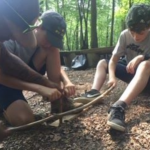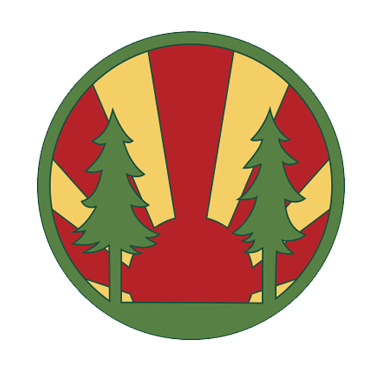Using a spark to generate a flame can require many attempts and a resilient approach.
Bushcraft – Fire

Bushcraft – Fire
Half day
Introduction and Fire Safety
Building and lighting a fire
Cooking over an open fire
Set in the ancient woodlands surrounding Biblins Campsite you will learn how to make a fire safely. Using a spark to generate a flame can require many attempts and a resilient approach. This activity can be related to the formation of new materials, Global Warming and our Stone Age ancestors.
Curriculum Links
- listen and respond appropriately to adults and their peersexplain that some changes result in the formation of new materials, and that this kind of change is not usually reversible, including changes associated with burning and the action of acid on bicarbonate of soda
- late Neolithic hunter-gatherers and early farmers, for example, Skara Brae
- take part in outdoor and adventurous activity challenges both individually and within a team
- compare their performances with previous ones and demonstrate improvement to achieve their personal best
- how to predict, assess and manage risk in different situations
- strategies for keeping safe in the local environment or unfamiliar places (rail, water, road) and firework safety; safe use of digital devices when out and about
- to recognise reasons for rules and laws; consequences of not adhering to rules and laws
- ways of carrying out shared responsibilities for protecting the environment in school and at home; how everyday choices can affect the environment (e.g. reducing, reusing, recycling; food choices)
- using Standard English confidently in a range of formal and informal contexts, including classroom discussion
- make predictions using scientific knowledge and understanding
- plants making carbohydrates in their leaves by photosynthesis and gaining mineral nutrients and water from the soil via their roots.
- the reactants in, and products of, photosynthesis, and a word summary for photosynthesis
- the dependence of almost all life on Earth on the ability of photosynthetic organisms, such as plants and algae, to use sunlight in photosynthesis to build organic molecules that are an essential energy store and to maintain levels of oxygen and carbon dioxide in the atmosphere
- the properties of the different states of matter (solid, liquid and gas) in terms of the particle model, including gas pressure
- conservation of mass changes of state and chemical reactions
- diffusion in terms of the particle model
- chemical reactions as the rearrangement of atoms
- combustion, thermal decomposition, oxidation and displacement reactions
- the carbon cycle
- the composition of the atmosphere
- the production of carbon dioxide by human activity and the impact on climate
- heating and thermal equilibrium: temperature difference between two objects leading to energy transfer from the hotter to the cooler one, through contact (conduction) or radiation; such transfers tending to reduce the temperature difference: use of insulators
- the difference between chemical and physical changes
- take part in outdoor and adventurous activities which present intellectual and physical challenges and be encouraged to work in a team, building on trust and developing skills to solve problems, either individually or as a group
- listening and responding in a variety of different contexts, both formal and informal, and evaluating content, viewpoints, evidence and aspects of presentation
- life on Earth is dependent on photosynthesis in which green plants and algae trap light from the Sun to fix carbon dioxide and combine it with hydrogen from water to make organic compounds and oxygen
- organic compounds are used as fuels in cellular respiration to allow the other chemical reactions necessary for lifethe chemicals in ecosystems are continually cycling through the natural world
- stem cells in animals and meristems in plants
- photosynthesis as the key process for food production and therefore biomass for life
- how materials cycle through abiotic and biotic components of ecosystems
- renewable and non-renewable energy sources used on Earth; changes in how these are used
- take part in further outdoor and adventurous activities in a range of environments which present intellectual and physical challenges and which encourage pupils to work in a team, building on trust and developing skills to solve problems, either individually or as a group
- H22. ways to identify risk and manage personal safety in new social settings, workplaces, and environments, including online
